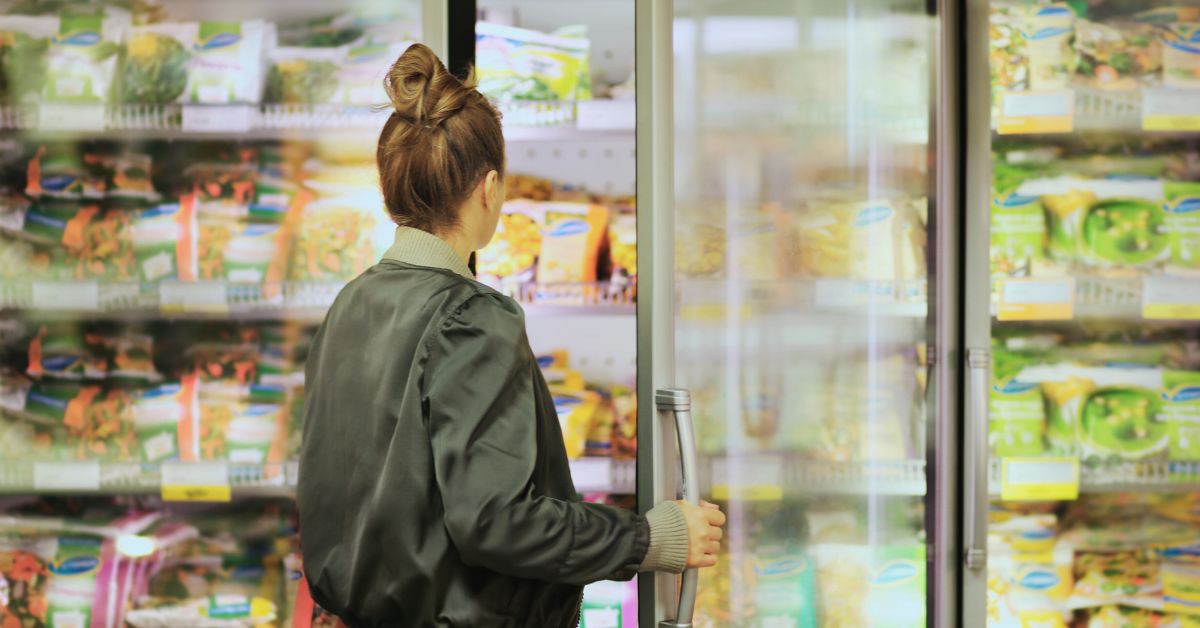In 2023, the FDA and USDA issued 337 recalls [1]—a sharp reminder that even trusted brands aren’t immune. And while the total number of food recalls did not increase in 2024 compared to 2023, the number of illnesses, hospitalizations, and deaths caused by recalled food did.
The rise in recalls is driven by accelerating production speeds, increasingly complex global supply chains, and widespread labor shortages. These pressures create a dangerous combination for food and beverage manufacturers: higher output with fewer people and more room for error.
The result? A single missed defect or misprinted label can trigger not only operational disruption—but a lasting blow to consumer trust.
A Harris Interactive poll found that over half of consumers would temporarily switch brands following a recall, and 15% say they’d never come back [2]. That’s not just a blip in brand loyalty; it’s a permanent crack in consumer confidence.
What Food Recalls Can Do to Brand Image
Product recalls in food and beverage manufacturing are more common than most companies would like to admit. From misprinted allergen labels to unnoticed foreign objects and defects, the causes vary—but the consequences are consistent: operational disruption, regulatory penalties, reputational damage, and lost revenue.
Today, those consequences escalate faster than ever. Thanks to social media and online review platforms, news of a product defect doesn’t stay quiet. One tweet, TikTok, or Reddit thread about a mislabeled allergen or foreign object can spread like wildfire—long before an official recall is even announced. Customers don’t just contact your support team; they take their frustration public, amplifying the damage to your brand reputation in real time.
Recalls also force companies into reactive mode: halting production, scrambling for root cause analysis, managing crisis communications, and answering to regulators. Even after the issue is resolved, the brand damage lingers—especially when 15% of affected consumers say they won’t return.
Consumers may forgive, but they rarely forget. And in a saturated marketplace where every shelf is a battlefield, losing just 15% of your customer base permanently is a blow most companies can’t afford.
The Problem? Manual Food Inspection Can’t Keep Up
Human inspectors are diligent, but they’re not machines—and they shouldn’t have to be. Manual inspection processes are vulnerable to fatigue, distraction, and inconsistency. When demand increases and lines speed up, the likelihood of missing a defect or label error skyrockets.
Though vital, manual inspection methods aren’t built for modern production environments. As lines speed up and labor becomes scarcer, expecting human inspectors to catch every error—every time—is unrealistic.
This creates a dangerous gap in quality control. The kind that leads to recall-triggering oversights.
As a recent example, in March 2025, the USDA announced efforts to streamline pork and poultry processing [3] to improve efficiency and competitiveness in U.S. agriculture. While this move supports growth, production lines will move faster, increasing the changes for deadly human error. The good news is that automated quality control is easier than ever, with sweeping benefits for consistency and traceability.
That’s where Vision AI steps in.
The Solution to Food Recalls is Vision AI Inspection
Vision AI is transforming how food and beverage manufacturers think about quality assurance. By automating inspections with smart, camera-based systems, manufacturers can detect issues in real time—at scale. Whether verifying date codes, checking packaging seals, identifying product defects, or spotting foreign objects, Vision AI brings speed, precision, and consistency to every line.
No breaks. No missed errors. No guesswork.
Vision systems like ClearVision deliver real-time, automated inspections tailored to the most common—and costly—issues in food and beverage manufacturing.
Vision AI Can Reduce Food Recalls By:
- Verifying labels and date codes with pinpoint accuracy, ensuring allergen warnings, expiration dates, and regulatory markings are present, legible, and correct.
- Detecting product defects like undercooked or broken items, color inconsistencies, or missing components before they leave the line.
- Catching foreign objects that don’t belong in packaging, such as stray materials, bits of plastic, or contaminants introduced during processing that metal detectors will miss.
- Confirming packaging integrity, spotting issues like improper seals, missing caps, or misaligned lids that could compromise freshness or safety.
These aren’t one-size-fits-all solutions. Each system is customized to the client’s unique production setup, learning and adapting over time to catch anomalies that human eyes might miss—every single shift, every single day.
Future-Proofing Starts with Vision AI
As regulatory scrutiny increases and consumer expectations rise, adopting AI-powered solutions isn’t just a smart move—it’s a competitive necessity. Vision AI reduces the risk of recalls, protects your brand, and gives your team the tools to focus on what matters: safe, high-quality products and happy customers.
ClearObject: The Experts in Vision AI for Food & Beverage
At ClearObject, we specialize in deploying Vision AI solutions designed specifically for the complex needs of food and beverage manufacturers. From label verification to defect detection, our ClearVision platform helps you spot problems before they ever leave your facility.
Don’t wait for a recall to expose your blind spots. Future-proof your inspections with ClearVision.
📩 Let’s talk. Contact us here or at sales@clearobject.com to schedule a consultation today.
SOURCES:
Summary of Recall and PHA Cases in Calendar Year 2023
Survey Finds Consumers Not Forgiving or Forgetting Company Mistakes

